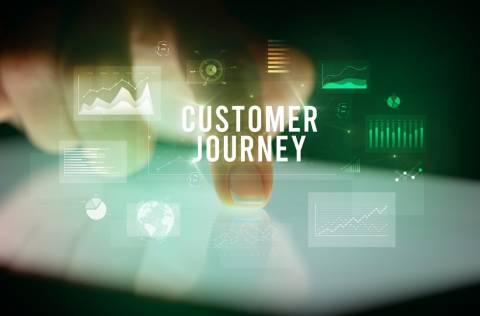Defining the body of experiences your customers have with your company can prove highly beneficial in facilitating the overall improvement of your market offerings.
Customer journey mapping highlights the many points of contact a customer encounters with your business as they work their way towards a specific outcome or goal. In addition to specifying such touchpoints, a customer journey map should also connect the dots between them by deducing the customer’s actual thoughts and feelings as they progress from first contacting your company to completely resolving their problem.
How Customer Journey Maps Work
Customer journey maps are essentially diagrams with customer-company interaction plotted from a defined first interaction to a final result or loss of the customer in question.
Such maps tend to move in a linear fashion and accurately delineate key portions of a customer’s experience with your company.
Customer Journey Map Templates
Customer journey maps come in a wide variety of formats and you can choose to create one in whatever option works best for your objectives and requirements.
More detailed mapping efforts will likely require more complex map formats than short, simple customer journeys would necessitate.
The following templates can help you to grasp which format best fits your project:
Linear Customer Journey Maps
A Linear Customer Journey Map accurately portrays each step the customer takes while interacting with a given brand in sequence. This is a simple, yet highly effective way to quickly plot out the customer’s pain points and your company’s service or product successes.
Matrix-Type Customer Journey Maps
Matrix-style Customer Journey Maps help in documenting the finer details of each step that a customer takes in interacting with a given company.
By using a matrix as opposed to a simpler linear timeline, a variety of important factors can be recorded more quickly without losing track of each stage of the journey. The following factors are easy to capture using a matrix-style customer journey map:
- What the step itself is and when it took place.
- The customer’s thoughts and feelings.
- Specific touch points with a given business or division.
- Potential improvements that can be made and why they ought to be implemented at all.
Card-Type Customer Journey Maps
These types of maps follow a format similar to the afore-mentioned matrix maps; however, instead of specifically defining fields to fill in ahead of time, steps are often grouped into individual visual “cards” along with relevant notes.
Customer Journey Map Examples
To fully grasp how customer journey maps can be created and used, it helps to see a few good examples of them in action. Following are two customer journey maps that prove how powerful they can be in providing insight into your clients’ struggles when interacting with your brand:
Amazon’s Customer Journey Map
This conceptual map by Digitas clearly depicts the myriad details of each type of customer’s dealings with the giant online retailer Amazon. A notable detail here is the way in which two distinct customer journeys are mapped out based on the specific products the customer is interacting with.
Disney Life’s Guest Journey
This journey map made by Kat Reilly accurately assesses the many steps in action, thought and service usage pre-defined buyer personas were likely to follow in using Disney’s streaming service.
Everything from technical details surrounding infrastructure to emotional motivators of customers is plotted out carefully in this detailed map.
Customer Journey Mapping Tools
There are numerous tools that you can make use of to improve your customer journey mapping process – especially in the realm of software.
Such tools are easily classified by function as follows:
Visualization
Tools that fit into this category assist your team in creating graphical representations of a customer’s journey by providing a simplified toolset, prebuilt diagrams and more.
Collaboration
These tools allow individuals involved in the mapping process to share information, update conceptual details and work together in general without succumbing to confusion through opaque separation of concerns.
Monitoring
Here, common business development software and tools such as Voice of the Customer analytics, customer experience software, employee experience software, VoC surveys, and other VoC tools factor in, allowing organizations to not only capture raw information for mapping purposes, but group and otherwise arrange said information to make it more cohesive and useful overall.
For information on how speech analytics can help measure the voice of your customer, download our white paper, Measuring Voice of the Customer.
Customer journey mapping has a great many strengths for businesses to benefit from and can be incorporated into most developmental strategies with relative ease. Mapping out the actions your customers take can keep issues in understanding and communication at bay, while opening doors to more knowledge-driven growth than you would otherwise be aware of.
Has your business had success with customer journey mapping?




